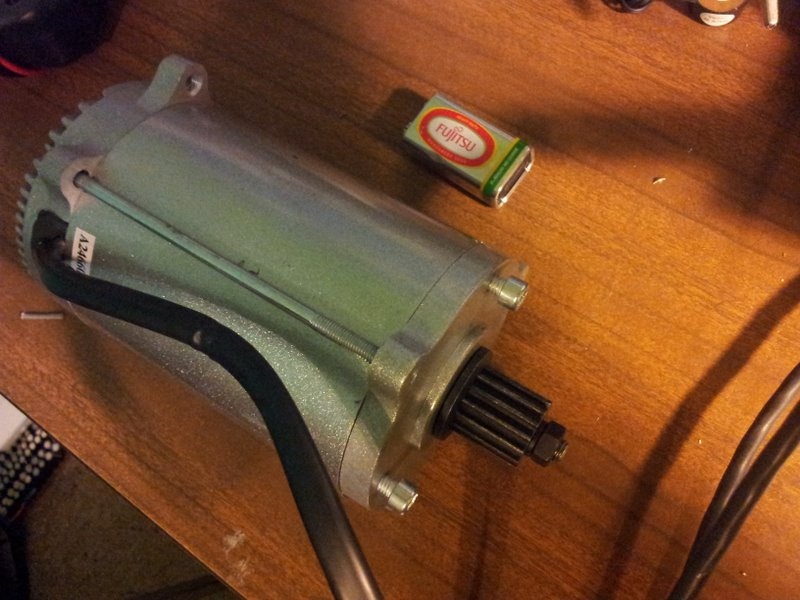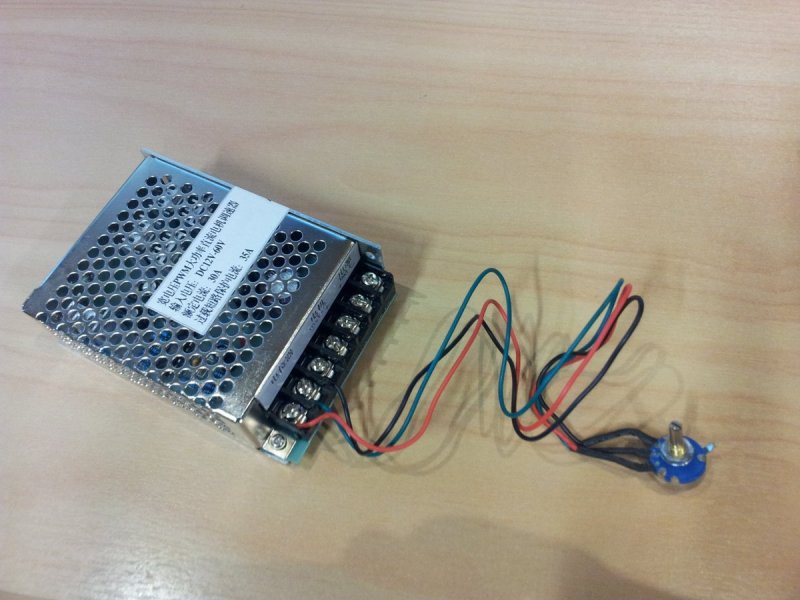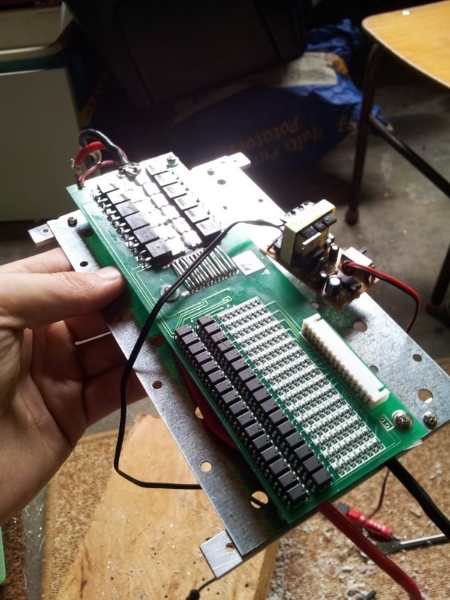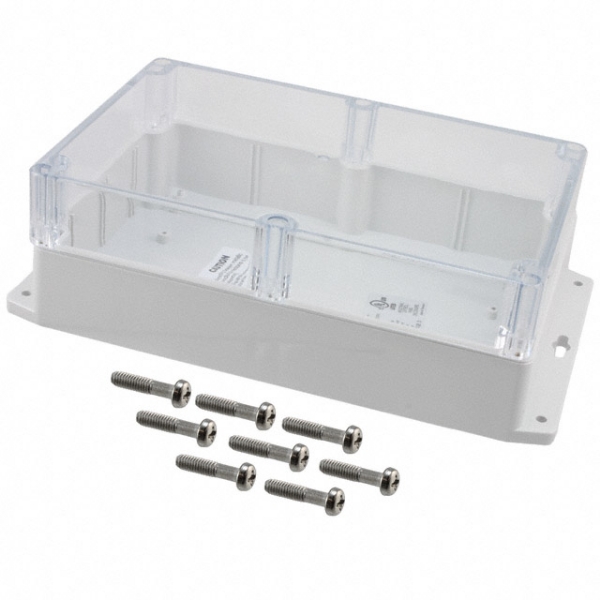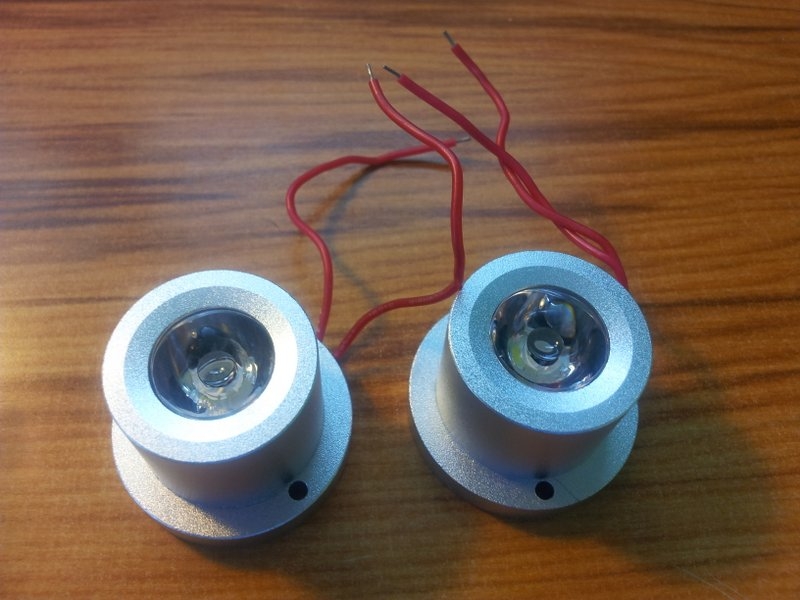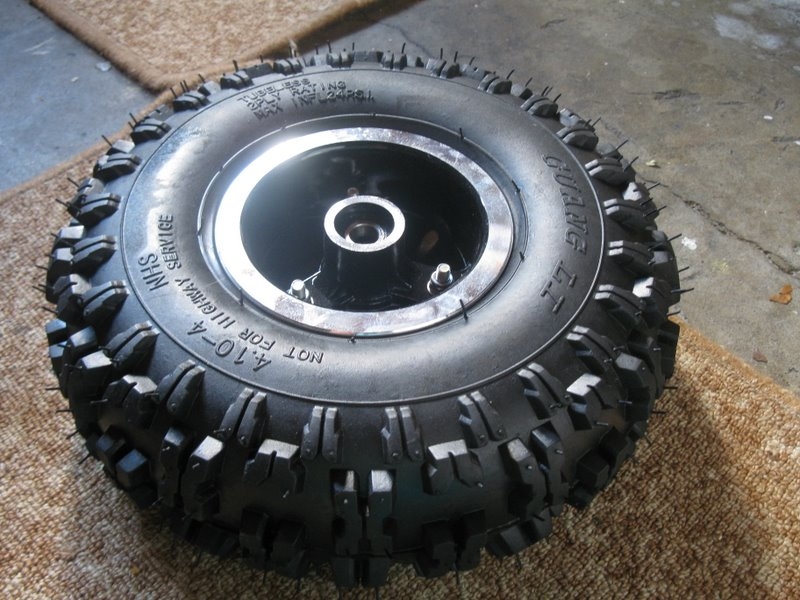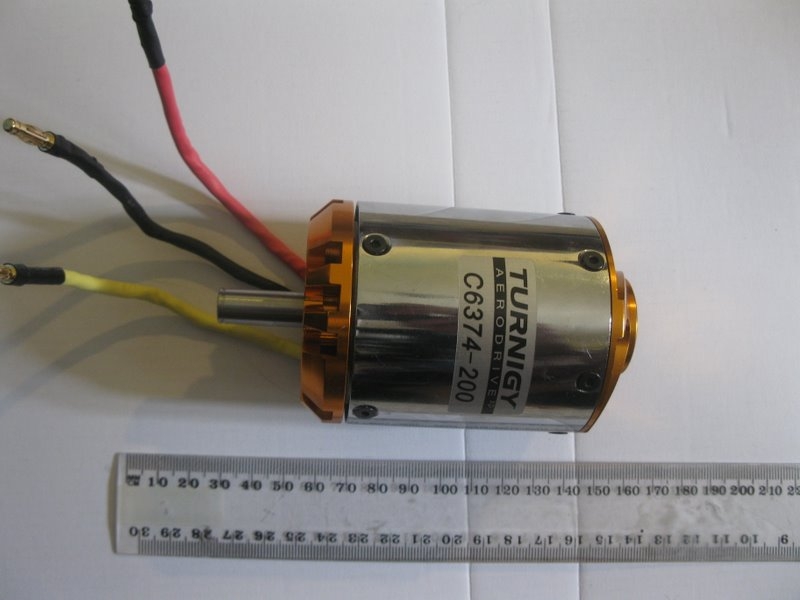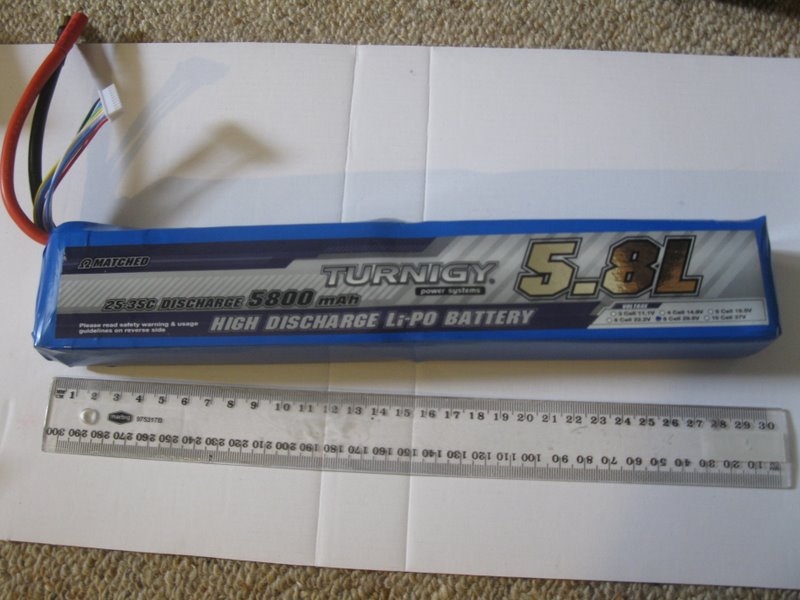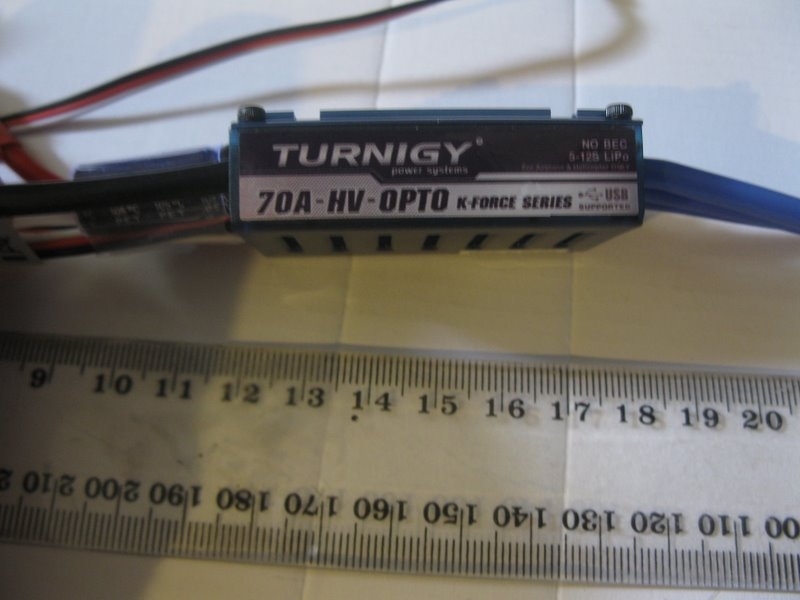Electric Skateboard Hardware
This page contains basic stats about all the individual pieces of hardware that went into the construction of the electric skateboard.
Current Hardware
- Motor
- Motor Controller
- Battery
- Battery Management System (BMS)
- Skateboard Electronics Enclosure
- Lights
- High Power On/Off Relay
Current Hardware
Motor
The motor was brought from TradeMe.
| Technology | Brushed DC |
| Brand | Unite Motor |
| Model | MY8919 |
| Rated Voltage | 36V |
| Rated Current | 28.4A |
| Rated Power | 800W |
| Rated Speed | 3000RPM |
| Weight | 3.42kg |
| Vendor | Greenskate from TradeMe. |
Motor Power Wire thickness (individual): 3.25mm (OD)
Wire thickness (total, including shealth): 8mm (OD)
Motor Controller
The motor controller was brought after I gave up in frustration about trying to build my own half-bridge (and I didn’t give up easily, see the post Skateboard Half-Bridge Blew Up (for the 10th+ time)).
| Manufacturer | ? |
| Manufacturer Part Number | A121# |
| Supplier | Tiger Ecommerce Co. LTD (AliExpress) |
| Supplier Part Number | 486387907 |
| Supplier Price | US$54.38 |
| Rated Bridge Voltage | 12-60V |
| Maximum Continuous Bridge Current | 30A |
| Current Trip Limit | 35A |
I had a sneak peak around in the guts of this thing, and I discovered that it had four n-channel MOSFETs (STP75NF75x4) and four schottky diodes (NFA19) to make up the half-bridge. Both components were in the TO-220AB package, and each all four of each were in series to increase the current capabilities.
Battery
The battery was brought from AliExpress.
| Supplier | Shirley Hu (AliExpress) |
| Supplier Price | US$363.42 |
| Chemistry | LiFePO4 |
| Brand | ? |
| Rated Voltage | 48V |
| Capacity | 10Ah (1.728MJ) |
| Maximum Continuous Discharge Current | 20A |
| Maximum Instantaneous Dischage Current (BMS Limited) | 60A |
| Size | 270x180x75mm |
| Weight | 5.9kg |
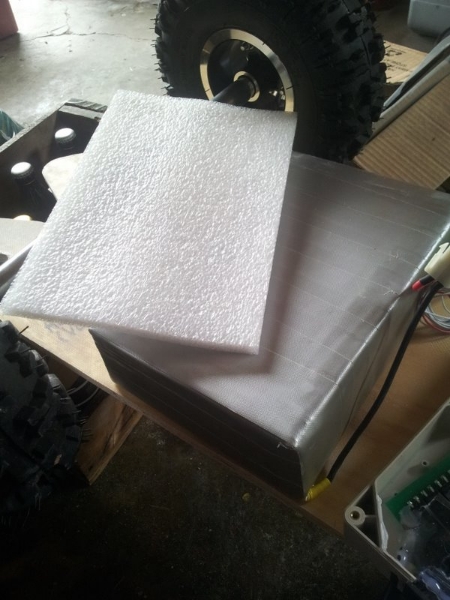
Battery Management System (BMS)
The battery management system came with the LiFePo battery. It protects the battery from high currents, provides a mechanism for charging, and charge balances the individual cells in the battery.
| Enclosure Size (wlh, mm) | 23512045 |
| PCB Size (wlh, mm) | 1986110 |
| Weight (grams) | n/a |
Skateboard Electronics Enclosure
Specs:
| Brand | Bud Industries |
| Model | PN-1329-CMB |
| Datasheet | External Link |
| External Dimensions (whd) | 222x146x75mm |
| Environmental Rating | IP67 |
| Weight | 499g |
| Vendor | Digi-Key |
| Vendor Part Num | 377-1895-ND |
Lights
White Front Lights And Red Rear Light
| Voltage | 12V |
| Current | ? |
| Rated Power | 1W |
| Vendor | Deal Extreme |
| Vendor ID | 11263 (link to product) |
Used for seeing where you are riding at night, and for cars to see you. The red light was made by putting red cellophane over a white light.
Green Flexible EL Skirting Light
| Type | Flexible EL Wire |
| Voltage | 12V |
| Vendor | Deal Extreme |
| Vendor ID | 41015 (link to product) |
High-Power On/Off Relay
After the low-side MOSFET power switch idea failed, I decided to use a high-power on/off relay.
| Manufacturer | TE Connectivity |
| Manufacturer Part Number | V23134J1053D642 |
| Element14 Order Code | 991-3793 |
| Coil Voltage | 24V |
| Coil Resistance | 332Ω |
| Operating Power | 1.6W |
| Rated Contact Voltage | 500VAC |
| Maximum Continuous Contact Current | 25A |
| Maximum Peak Contact Current | 240A |
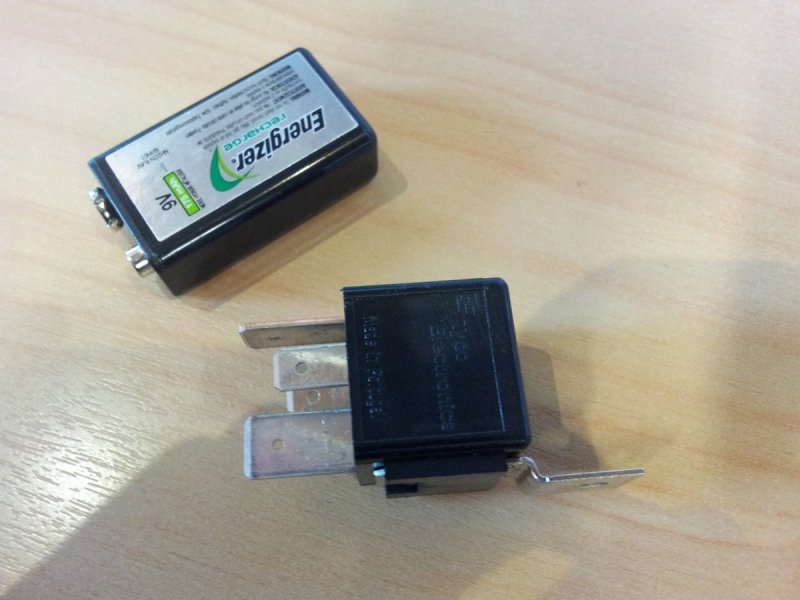
Wheels
As mentioned, the wheels were also brought from Green Skate. If you are imagining normal skateboard wheels, you’ve got it all wrong! These are huge, pneumatic off-road wheels.
Axles
The axles were brought from Green Skate (www.greenskate.co.nz). They are designed for the large off-road tires that I brought from the same place. They come with a nice thick 11mm rubber block for shock absorption.
Rear Axle Weight: 1.86kg
Bolt Diameter: 6.0mm
Bolt Length: 45mm
Bolt Head Type: Counter-sunk, accepts 4mm hex key
Number of Bolts: 4 (square layout)
Distance Between Centers: 90mm
Belt
The belt was supplied with the wheels and axles.
Old Prototype Hardware
Motor
- Technology: Brushless DC (BLDC)
- Brand: Turnigy
- Voltage: 10-36V
- Style: Outrunner
- Shaft Diameter: 10mm
- Kv: 200
- Weight: 914g
- Dimensions: 63mmx92mm
- Vendor: Hobby King
- Vendor Code: HXT63-74-200
- Price: NZ59.99)
Notes: One of the largest outrunner motors that Hobby King sells. Sensorless motor, to requires an ESC that used the back EMD for position detection.
Battery
- Chemistry: Li-Po
- Brand: Turnigy
- Voltage: 29.6V (8 Li-Po cells, quoted as 8S)
- Capacity: 5800mAh
- Max Discharge Rate: 203A (quoted as 25-35C)
- Vendor: Hobby King
- Vendor Code: T5800L.8S.25
- Price: NZ99.99)
Notes: 8AWG wire connections. Supplied with 5.5mm gold connectors, but I replaced them with the 4mm gold connectors because I won’t be drawing too much current. These connectors require a small blow torch to solder as they are too large for a soldering iron to handle (even when set at 450°C!). Update (05/03/11): One of the eight cells has died. There is not voltage across it and the cell draws current without a voltage appearing across it’s terminals. In other words, rooted. This was on the second charge! I’m going to have words with Hobby King.
Motor Driver
- Technology: BLDC ESC (electronic speed controller)
- Brand: Turnigy
- Model No: 70A-HV-OPTO
- Min Voltage: 18.5V (5 Li-Po Cells, quoted as 5S)
- Max Voltage: 44.4V (12 Li-Po Cells, quoted as 12S)
- Max Current: 70A
- Vendor: Hobby King
- Vendor Code: KF-70A
- Price: NZ69.99)
- Manual: n/a
An electronic speed controller (ESC) in hobby circles is a power circuit which controls the speed of a brushless DC motor. They typically are rated for motor currents between 20-150A and use MOSFETs, PWM and back EMF sensing to switch the currents through the motor windings at the correct time. They are necessary to set up a rotating magnetic field since BLDC motors are not commutated like brushed DC motors. They typically accept a PWM input to control the speed of the motor (which is designed to be directly connect to a RC receiver, but I will be generating the PWM with a micro-controller instead), and feature programmable settings to control the characteristics of the controller (such as acceleration, braking force e.t.c).
ESC Programming Card (redundant after v1.1 failed)
- Brand: Turnigy
- Model No: Unknown
- Vendor: Hobby King
- Vendor Code: Unknown
- Price: US$6.95
- Manual: n/a
A programming card connects to the ESC and makes programming of the variable settings of the ESC easy. Without a programming card, you have to do it the harder and not so easy to understand way of using the the throttle. Anyway, it turns out that the particular programming card I got isn’t compatible with the ESC anyway. Even though Hobby Kings website says it is, and I quote “Compatible with all Hobbywing, Thunderpower, Turnigy and OEMRC Sentilon speed controllers”. In the end I had to use the throttle method, which worked perfectly fine even though the throttle and PWM signal was custom made. Goes to show I got the programming half right!


